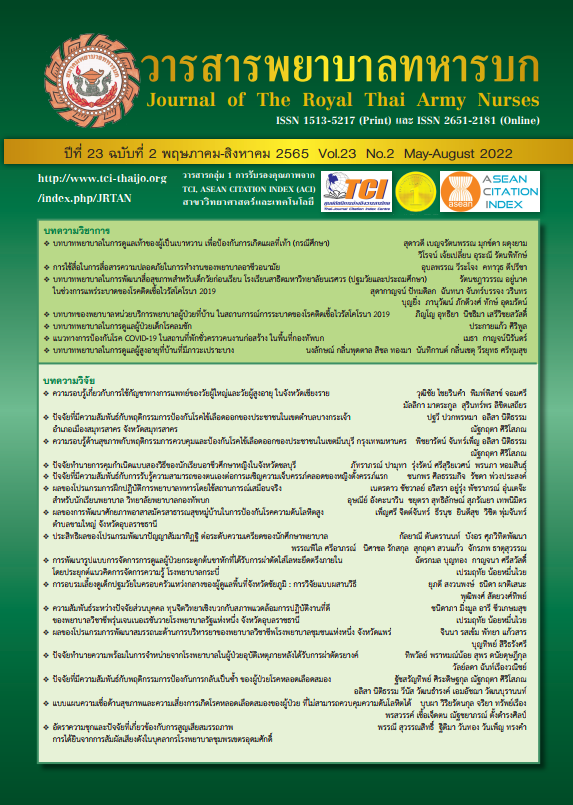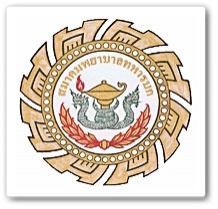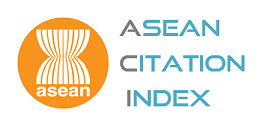แนวทางการพัฒนาเป็นมหาวิทยาลัยปลอดบุหรี่ ของมหาวิทยาลัยราชภัฏลำปาง
คำสำคัญ:
มหาวิทยาลัยปลอดบุหรี่, แนวทางการพัฒนามหาวิทยาลัยปลอดบุหรี่บทคัดย่อ
การวิจัยมีวัตถุประสงค์ เพื่อศึกษาการมีส่วนร่วม และสร้างแนวทางการพัฒนาเป็นมหาวิทยาลัยปลอดบุหรี่ ของ มหาวิทยาลัยราชภัฏลำปาง เป็นการวิจัยแบบผสมผสานวิธีทั้งการวิจัยเชิงคุณภาพและวิจัยเชิงปริมาณ ประชากร 7,211 คน กลุ่ม ตัวอย่าง 364 คน ใช้การสุ่มตัวอย่างแบบแบ่งชั้นและแบบเฉพาะเจาะจง เครื่องมือวิจัยได้แก่ แบบสนทนากลุ่ม, แบบสอบถามการมี ส่วนร่วม, แบบประเมินประสิทธิภาพ และร่างแนวทางการพัฒนาสู่มหาวิทยาลัยปลอดบุหรี่ วิเคราะห์ ข้อมูลโดยแจกแจงความถี่ ค่าร้อยละ ค่าเฉลี่ย, ส่วนเบี่ยงเบนมาตรฐาน, Thematic analysis และ Content Analysis
ผลการวิจัย พบว่า มีส่วนร่วมในการสร้างแนวทางการพัฒนาสู่มหาวิทยาลัยปลอดบุหรี่ ภาพรวมอยู่ในระดับมาก, ประสิทธิภาพของทุกองค์ประกอบ มีความเหมาะสมร้อยละ 85.5 และมีความเป็นไปได้ร้อยละ 83.7, แนวทางการพัฒนาเป็น มหาวิทยาลัยปลอดบุหรี่ มี 10 องค์ประกอบ คือ 1) เป้าหมายชัดวัดผลได้ 2) ผู้นำการพัฒนา 3) ปรับแนวคิดเสริมองค์ความรู้ 4) การประเมินผล 5) การบังคับใช้กฏหมาย 6) แรงจูงใจและการเสริมพลัง 7) การทำงานเป็นทีม 8) การมีส่วนร่วม 9) การสื่อสารประชาสัมพันธ์ 10) ชุมชนและสังคมรอบมหาวิทยาลัย แนวทางการพัฒนาสู่มหาวิทยาลัยปลอดบุหรี่ของมหาวิทยาลัยราชภัฏลำปาง เกิดจากการมีส่วนร่วมในการร่างของ ผู้บริหารมหาวิทยาลัย, อาจารย์, บุคลากร และนักศึกษา แนวทางสามารถนำไปปฏิบัติได้จริงในมหาวิทยาลัย และชุมชนรอบ มหาวิทยาลัย
Downloads
เอกสารอ้างอิง
World Health Organization. Age-standardized estimates of current tobacco use, tobacco smoking and cigarette smoking (Tobacco control: Monitor). 2020.
Center for Research and Knowledge Management for Tobacco Control. Thailand Tobacco Consumption Situation Report 2019. Sinthaweekit Printing Limited Partnership., Bangkok. 2020. (in Thai)
National Cancer Institute. Cigarettes and cancer. National Cancer Institute, Department of Medicine, Ministry of Public Health, Bangkok. 2019. (in Thai)
Yeepoo C. Usa Kongthong and Boonrueng Sriherun. The development of a learning activity model for reduce and stop smoking behavior of drug addiction for children and adolescent patient. Valaya Alongkorn Review. Humanities and Social Science. 2018; 8(1):131-146. (in Thai)
Akkarakittipong P. Psychosocial Factors Related to Preventing Smoking Behaviors Of primary school students in Bangkok. Veridian E-Journal,University Silpakorn. 2018 ; 11(2): 50-62. (in Thai)
Krung Kraipet L. Factors affecting smoking of Burapha University students. Journal of Burapha Vejsarn. 2017; 4(1): 21-30. (in Thai)
Chan Nuan N. The smoking situation among personnel and students ofUbon Ratchathani University. Under the Ubon Ratchathani University project smoke-free. Journal of Science and Technology Ubon Ratchathani University. 2016; 18(2). (in Thai)
Tobacco Control Bureau. Tobacco Products Control Act B.E. in 2560. Ministry of Public Health, Thammasat University Press. 2017. (in Thai)
Bureau of Tobacco Control. National Tobacco Control Strategic Plan 2065-2070. Ministry of Public Health. Nice Earth Design Co. Ltd. 2021. (in Thai)
Jai Sa-san P. Legal measures to control smoking in schools. Chandrakasemsarn Journal. 2014; 20(39): 11-18. (in Thai)
Cochran, W.G. Sampling Technique. 2nd Edition, John Wiley and Sons Inc., New York. 1963
Sollecito W, Johnson J. Contineous quality improvement in health care. Mallay, Inc. USA. 2012.
Thaweerat.P.. Research Methods in Behavioral Sciences and Social Sciences (7th Edition). Bangkok: Bureau of Educational and Psychological Testing Srinakharinwirot University. 2000. (in Thai)
Thuansri Y, Oonjan S. Mechanism to Reduce Access to Cigarettes of Male Students Paticipartory of Uttaradit Rajabhat University. Journal of Lampang Rajabhat University. 2016; 5(1). (in Thai)
Netwong T, Chuayrodmod S. Ratchadaphorn Thirawan.Development Direction for Non-Smoking University by Project and Community Based Research. RMUTI Journal of Humanities and Social Sciences. 2019; 6(1). (in Thai)
Matrakul M, Singkhorn O, Phadaennok N. The implementation of a smoke-free campus policy at Mae Fah Luang University. Thai Journal of Nursing.2018; 67(1): 11-18. (in Thai)
Robert L. Routhieaux. et al. Shared Leadership and Its Implications for Nonprofit Leadership. Journal of Nonprofit Education and Leadership. 2015; 5(3): 139-152.
Thammakawinwong N. Creating Policy Participation of Health Behavior for Reduce Cancer, Hypertension and Cardiovascular Disease in Maelan Subdistrict, Li District, Lamphun Province. Journalof the Royal Thai Army Nurses. 2020;21(2): 116-117. (in Thai)
Pichai S. Development of processes of changing thoughts and Conditional Behavior to reduce smoking For students who are smoking addicts: EEG study. Journal of behavior. Science for development. 2017; 9(1): 99-119. (in Thai)
Jiewpattanakul Y. Youth expectations for their families to prevent smoking. Journal of the Royal Thai Army Nurses.2016;17(5): 51-58. (in Thai)
ดาวน์โหลด
เผยแพร่แล้ว
รูปแบบการอ้างอิง
ฉบับ
ประเภทบทความ
สัญญาอนุญาต
ลิขสิทธิ์ (c) 2022 วารสารพยาบาลทหารบก

อนุญาตภายใต้เงื่อนไข Creative Commons Attribution-NonCommercial-NoDerivatives 4.0 International License.
บทความหรือข้อคิดเห็นใดใดที่ปรากฏในวารสารพยาบาลทหารบกเป็นวรรณกรรมของผู้เขียน ซึ่งบรรณาธิการหรือสมาคมพยาบาลทหารบก ไม่จำเป็นต้องเห็นด้วย
บทความที่ได้รับการตีพิมพ์เป็นลิขสิทธิ์ของวารสารพยาบาลทหารบก
The ideas and opinions expressed in the Journal of The Royal Thai Army Nurses are those of the authors and not necessarily those
of the editor or Royal Thai Army Nurses Association.







